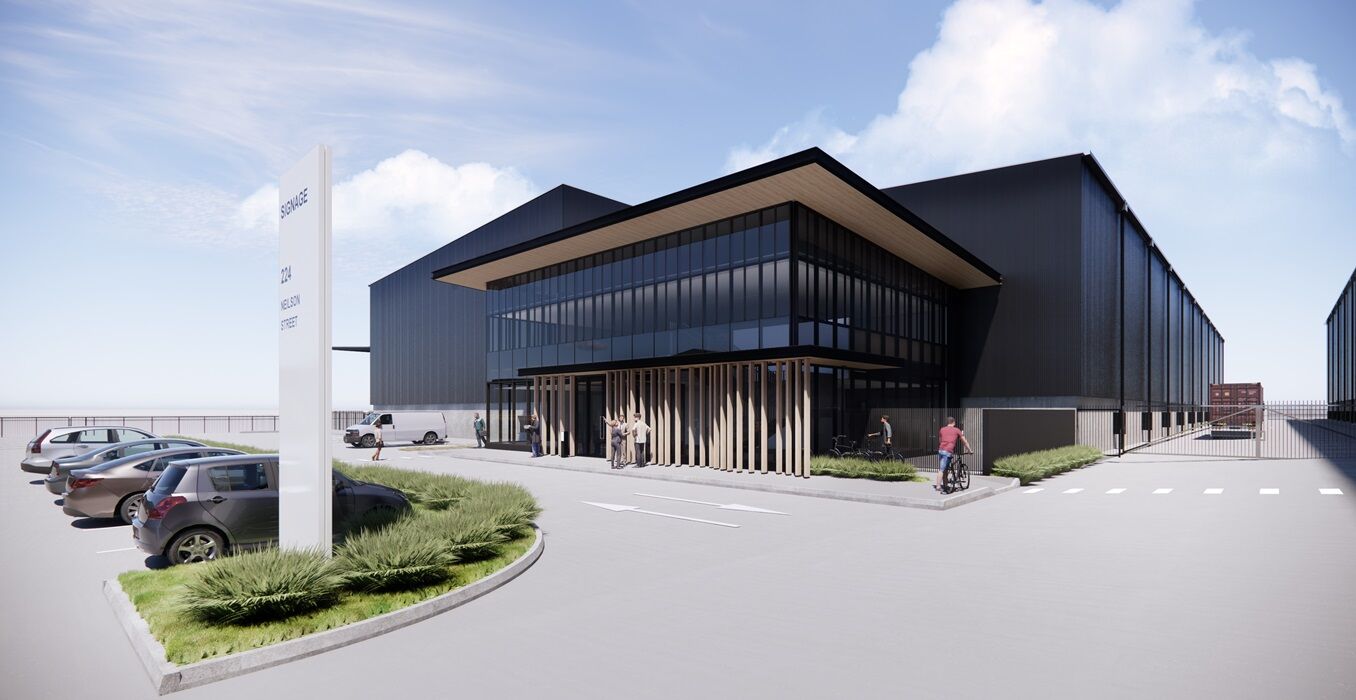 Artist's impression
Artist's impressionCommercial -
Industrial gamechangers
The industrial property sector has transcended its utilitarian image to become a high-value, well-performing, and sought-after asset class at the forefront of technology integration and heavily onboard with sustainability and green initiatives, according to full-service real estate agency, Bayleys.
In its latest commercial and industrial portfolio, Total Property, the firm talks to its national head of industrial business, Scott Campbell and other industry leaders about the evolution of industrial property beyond the sawtooth-roofed sheds of old.
Campbell says New Zealand can compete globally on asset quality, and our uptake of technology is seeing the rise of intelligently automated warehousing solutions for quick and accurate picking, packing, processing and dispatching.
“The adoption of artificial intelligence algorithms and mechanisms to revolutionise logistics operation is resulting in operational efficiencies, the uptake of hyperlocal delivery models, integration of electric vehicles into delivery fleets, and technology to optimise delivery routes.”
The development sector’s response to a changing large corporate environment has been entrepreneurial, creating flagship industrial buildings that are revolutionising the way New Zealand businesses operate.
“This is not a matter of jumping on a bandwagon – it’s a strategic and very deliberate move by developers to create assets that are set up for long-term success, and which meet the goals and expectations of discerning stakeholders and operators.
“Cleverly designed and tech-enabled industrial buildings allow occupiers to be more flexible and responsive to changing market forces, thereby ensuring their operations are resilient and adaptable to whatever is thrown their way.”
Campbell says five years ago, only around five percent of Bayleys’ industrial occupiers were talking about the integration of robotics into their business operations and factoring this into their real estate decisions. Today, that figure is around 50 percent.
“Many occupiers still only play the ball in front of them but technology and automation are advancing rapidly so to remain relevant in the marketplace, businesses will need to be more visionary and the big names in the market are definitely playing the long game.”
Campbell says as the industrial sector morphs to new demands, we should expect further growth in the country’s data centre sector given digital transformation, the need for data sovereignty, and New Zealand’s renewable energy advantages. Other segments to watch are the integrated cold chain logistics sector and automated vertical farm production facilities within temperature and light-controlled warehouses.
Sustainability is also high on corporate and developer agendas with new builds embracing best-practice green philosophies and solutions.
“Stakeholder interests and ESG mandates are largely dictating occupier green requirements, and this is particularly true for global corporates,” says Campbell.
Also commenting in Total Property is head of development for NZX-listed Argosy Property, Marilyn Storey who says it intends growing and greening up the industrial component of its extensive asst portfolio.
“Argosy’s current industrial weighting is 51 percent and growth within our industrial development pipeline will increase this to over 60 percent, with the company target set between 60-70 percent.
“We’ve also mandated to have over 50 percent of our portfolio assets green-rated by 2031, with these developments targeting 6-Green Star ratings and low-operating carbon through the use of solar.”
With stakeholders championing ESG mandates, Storey says most of the offshore occupier enquiry has a sustainability requirement.
“In the sustainable space, New Zealand would be on par with Australia and Europe. The design quality of our buildings is excellent as we are delivering clear-span, seismically resilient buildings and incorporating climate adaptation into our design.
“We have an advantage in New Zealand with operating carbon, as our electricity grid produces a large amount of electricity from renewable energy sources.”
Technology and AI are reshaping how buildings are designed, with Storey saying automation, robotics and layout optimisation all contribute to the efficient use of a warehouse and reduce operational costs.
“We’re constructing warehouses that future-proof space flexibility for occupiers. We maximise the height to the knee, make them column-free wherever possible to optimise capacity, increase floor loadings, and ensure there’s truck articulation around the site for efficiency.”
While watching global trends, Storey says vertical warehousing is not currently on Argosy’s agenda, although it’s pipeline could flex and pivot should demand arise.
“The lack of strategically located land and escalating rental rates are driving vertical warehousing in overseas markets. It’s more complex to build multi-level industrial property in New Zealand given seismic thresholds, and it’s not suitable for all tenants, but in time we could see vertical warehousing here.”
Across the Tasman, Knight Frank’s national head of industrial logistics, James Templeton says vertical/multi-deck warehousing has been talked about for some time in Australia, however, it is only practical in certain very limited situations.
“Multi-storey warehousing exists extensively in places like Hong Kong, Singapore and some Japanese cities where land is very constrained, as well as in some port cities in Europe.
“Sydney is probably the only city in Australia with real land constraint issues given the local geography which limits growth in several directions.
“However, more generally and more importantly for industrial property currently is the ESG story, which until now was most widely associated with the office sector.
“ESG-related design and strategy is being embedded into high-end industrial developments to enable access to green capital, to help reduce operating costs, and to attract and retain quality tenants. It is also seen as future-proofing the investment credentials of an asset as regulations tighten.”